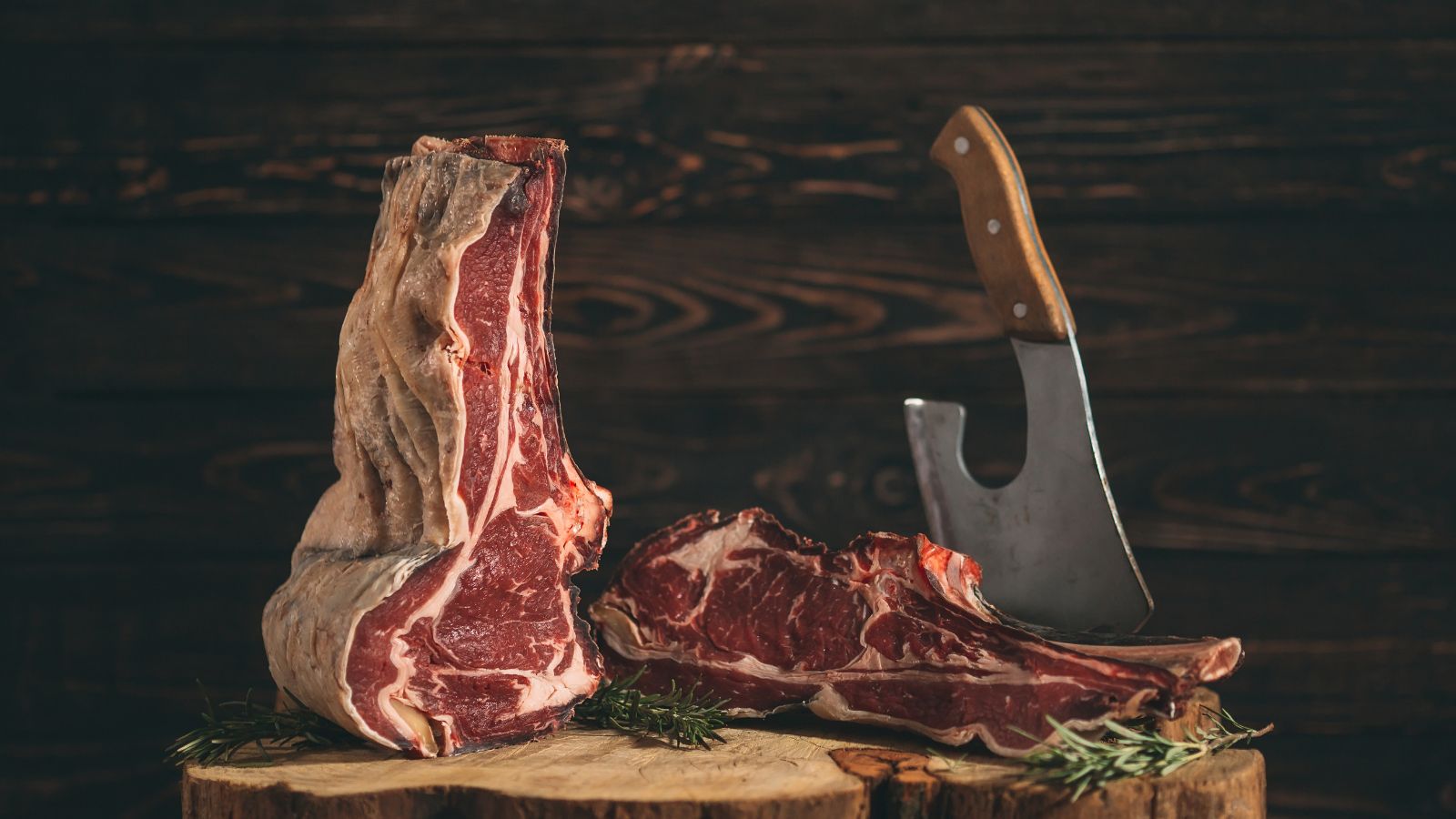
Is Wagyu Beef Grass Fed? The Truth About This Premium Meat
Photo Credit: Canva Pro
Wagyu beef is known for its rich flavor and high marbling, but many people wonder if it is grass-fed. The answer depends on where and how the cattle are raised.
This post explains if wagyu cattle eat grass, how their diet affects health, and what grass fed wagyu beef really means. We’ll also compare different types like American wagyu and Japanese wagyu beef to help you choose the best beef.
Is Wagyu Beef Grass-Fed or Grain-Fed?
Photo Credit: Canva Pro
Most Wagyu Is Grain-Finished — Here's Why
Although grass-fed wagyu beef sounds good, most wagyu cattle, especially those that produce premium Japanese wagyu beef, are finished on grains. Within Japan, wagyu cattle are commonly kept in feedlots and fed lots of calories to increase marbling, which is another name for intramuscular fat. Some specialty farms in Japan occasionally supplement Wagyu diets with beer or sake, and even chocolate to stimulate appetite, but this is rare and not a standardized practice.
-
Grain-Rich Diets: Wagyu are typically fed white rice, beans, bread, and olive peel to enhance marbling.
-
Limited Movement: Wagyu cattle are kept indoors to reduce muscle development and increase fat storage.
-
Marbling Goals: These methods help create beautifully marbled meat but sacrifice animal welfare and natural feeding habits.
The Rare Exception: 100% Grass-Fed Wagyu Exists
Some producers raise grass-fed wagyu naturally on pasture, but this doesn't happen very often. The natural way for these purebred wagyu cattle to graze is to roam free. It still makes high-quality wagyu steaks, but they have a little less marbling.
-
Ethical Farms: Australia and the UK have embraced grass fed wagyu models for better animal welfare.
-
True Grazing: These cattle are grass-finished, not just grass-fed at the start.
-
Healthier Outcomes: Grass-fed options offer leaner, more nutrient dense meat without sacrificing too much flavor.
Is Wagyu Beef Healthier Than Grass-Fed Beef?
Photo Credit: Canva Pro
Grass-Fed Wagyu Has a Unique Fatty Acid Profile
Wagyu beef, especially grass-fed wagyu, has a healthier fat profile than most other beef. Thanks to wagyu genetics, this meat is naturally rich in oleic acid, the same healthy fat found in olive oil. While it also contains saturated fats, their health impact depends on overall consumption patterns.
-
Balanced Fat Ratio: Omega-3 to Omega-6 ratio is close to 1.3:1 in grass-fed wagyu.
-
Oleic Acid Benefits: Helps reduce LDL (bad) cholesterol and increase HDL (good) cholesterol.
-
Comparison: Grain-fed beef typically has a higher Omega-6 to Omega-3 ratio than grass-fed, which may influence inflammation levels. However, the impact on heart disease risk depends on overall diet and lifestyle.
Grass-Fed vs. Grain-Fed: What Does Your Body Benefit More From?
Photo Credit: Canva Pro
Most of the time, health vs. taste is what makes people choose between grain-finished and grass-fed. While grain-fed wagyu has a deeper flavor, grass-fed wagyu has more vitamins, antioxidants, and a less inflammatory effect.
-
Nutrient Boost: Grass-fed beef is higher in vitamin E, beta-carotene, and B vitamins.
-
Digestive Benefits: Some consumers report feeling lighter after eating grass-fed beef, though scientific evidence comparing digestion between grass- and grain-fed Wagyu is limited.
-
Long-Term Health: A cleaner option for those managing inflammation or cholesterol.
Is Australian Wagyu Beef Grass-Fed?
Photo Credit: Canva Pro
Australia’s Approach: Grass-Start, Grain-Finish
Most Australian wagyu calves start out their lives on pasture, where they eat natural plants. To compete with Japanese wagyu beef, though, a lot of them are later grain-finished to make the marbling better. This method strikes a balance between farming in an ethical way and making high-quality meat.
-
Hybrid Model: Pasture-raised early, then grain-finished for 300+ days.
-
Economic Reason: Grain feeding ensures higher marbling, allowing farmers to sell at a regular price premium.
-
Consumer-Friendly: Offers wagyu at scale with consistent quality.
Can You Find Grass-Fed Wagyu in Australia?
Yes, but it's not common and costs more most of the time. Some farms only raise grass-fed wagyu, using open pasture and environmentally friendly methods to make the cattle healthier.
-
Smaller Farms: Boutique operations focus on animal welfare and pasture diets.
-
Honest Labeling: Look for 100% grass-finished certifications.
-
Wider Variety: Available in ground beef, chuck roast, and wagyu steaks for home cooking.
What Beef Is Better Than Wagyu?
Kobe Beef: The Crown Jewel of Japanese Wagyu
Kobe beef comes from Hyogo Prefecture in Japan. It is a type of wagyu beef. The Japanese cows that gave birth to it are Tajima, which is a breed of Japanese cow. Kobe is a national treasure, so it has to meet strict standards for tenderness, marbling, and texture.
-
Origin Rules: Only cattle raised in Kobe can be labeled as kobe beef.
-
Strict Grading: Must achieve A4 or A5 ratings before slaughter.
-
Luxury Appeal: Known for buttery flavorful meat and extreme marbling.
-
Price Tag: Among the most expensive beef in the world.
Other Contenders: Angus, Matsusaka, and More
People like the marbling in Wagyu, but other breeds also make good meat. These types of beef have rich flavors. Ohmi beef is one of Japan's oldest high-end lines.
-
Angus Beef: Popular for bold flavor and leaner cuts.
-
Matsusaka Beef: From virgin female cows; extremely tender and fatty.
-
Ohmi Beef: High in demand for refined texture and sweet fat.
-
American Wagyu Beef: Crossbred with Angus for a balanced profile.
Is All A5 Wagyu Grass-Fed?
A5 Grade Means Quality, Not Diet
The A5 label tells you how good the meat is, not what the cow was fed. It gives marks for color, texture, yield, and marbling. Most A5 beef, including kobe, is not grass-fed. Instead, it is finished with corn, soy, and wheat to make it fattier.
-
Grading Focus: A5 = best in tenderness and marbling.
-
Grain Finishing: Includes salt, grain, and sometimes sake for fat gain.
-
Not Pasture-Based: Even with early pasture life, most A5 is not grass-finished.
-
Feeding Duration: Grain-finishing lasts months before slaughter.
What A5 Wagyu Cattle Eat and Why
Most Japanese cattle eat a lot of calories and not much exercise to get that famous fat. Their food is carefully planned to improve texture and speed up marbling.
-
Feed Composition: Mix of corn, barley, soy, and sometimes beer.
-
Controlled Movement: Limited space to prevent muscle development.
-
No Grass Finish: Rarely left on pasture till the end.
-
With or Without Antibiotics: Varies by farm; some use antibiotics sparingly.
What FullyHealthy Offers for Wagyu Lovers
Epic Wagyu Strip: A Healthy, On-the-Go Option
The EPIC Wagyu Beef Steak Strip is sold at FullyHealthy. It is made from 100% grass-fed American wagyu beef and can be kept for a long time. It's a great choice for people who want high-quality beef that doesn't have any fillers, antibiotics, or artificial ingredients.
-
Real Ingredients: Made with grass-fed beef, salt, and simple spices.
-
No Additives: products of Fullyhealthy are free from antibiotics and fillers. Consumers should verify these claims by checking for third-party certifications.
-
Portable and Delicious: A snack with natural fat and real flavor.
-
AIP-Friendly: Supports elimination and reintroduction diets.
Why FullyHealthy Is a Great Place to Shop
There are more than just snacks at FullyHealthy. They have foods for people with special dietary needs. It focuses on clean options that have been processed as little as possible and backs brands that are committed to better standards for raising cattle.
-
Clean Sourcing: Verified ingredient lists for every product.
-
Exclusive Selection: Carries hard-to-find items like grass-fed ribeye snacks.
-
Trustworthy: Helps consumers avoid hidden additives in food.
Final Thoughts
Grass-fed wagyu beef is real, but you don't see it very often on the market. The Japanese cattle that are used to make wagyu are raised to have a lot of fat on their bodies. The difference in how the animals are fed and cared for affects the final product, whether it's American wagyu beef or traditional Japanese wagyu.
Pay attention to labels and sources if you want organic and clean options. If you care about health, taste, and morals, reading beyond the hype is very important, all the way down to your bones.
FAQs
What is the difference between wagyu and kobe beef?
Difference is kobe beef comes from one region, wagyu is the herd type. Kobe is a specific brand of wagyu.
Can humans eat wagyu every day?
Humans can, but it's high in fat. Balance with lean proteins unless it's organic grass fed wagyu.
Is wagyu beef available in the organic market?
Yes, a few organic farms offer grass fed wagyu beef, mostly in niche health-focused market settings.
Does wagyu beef contain bones?
No, bones are removed before sale, unless you're buying wagyu soup bones or specialty butcher cuts.
What is the difference in herd treatment between American and Japanese wagyu?
Japanese wagyu herd is raised with strict control and grain diet. American wagyu beef may allow more pasture time.

Leave a comment